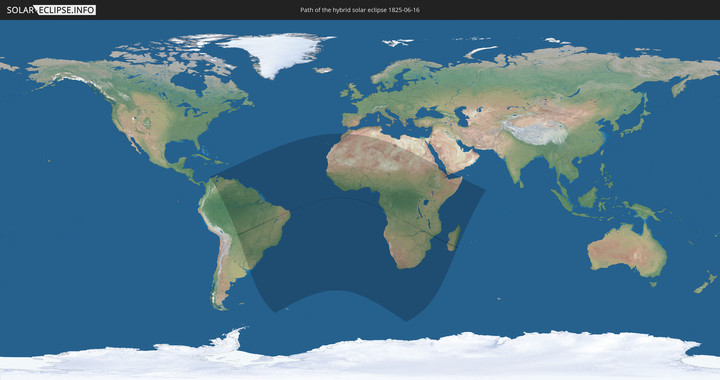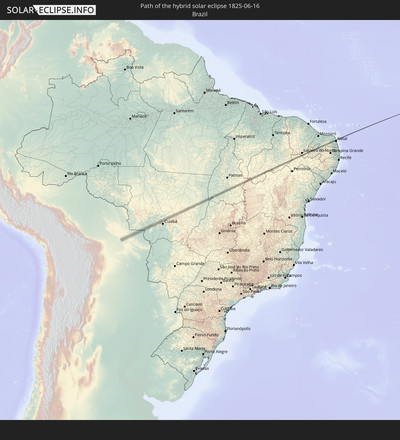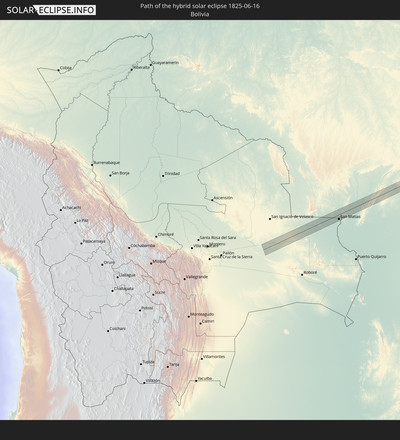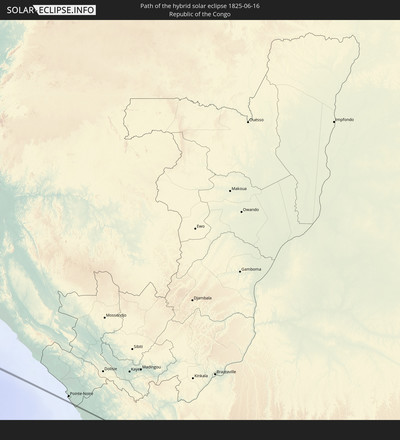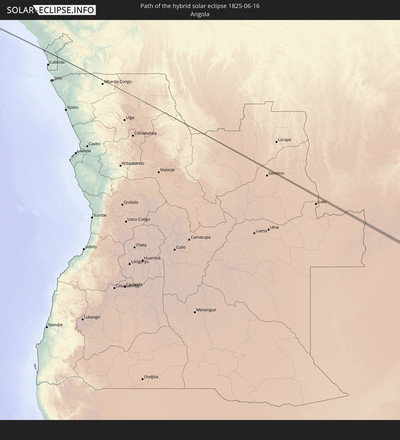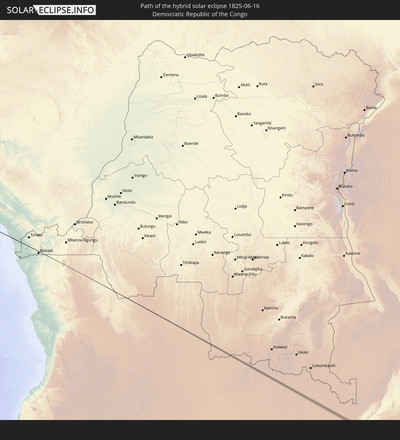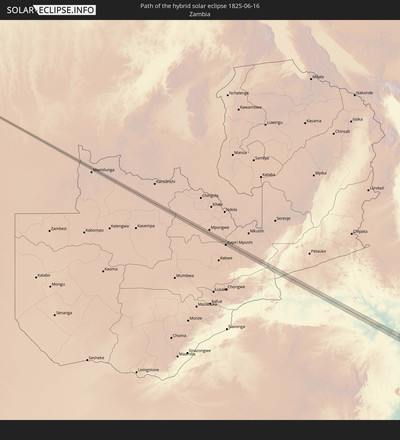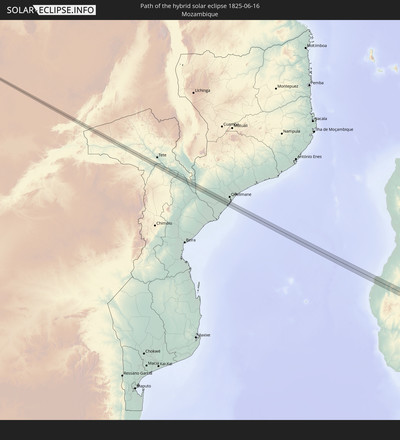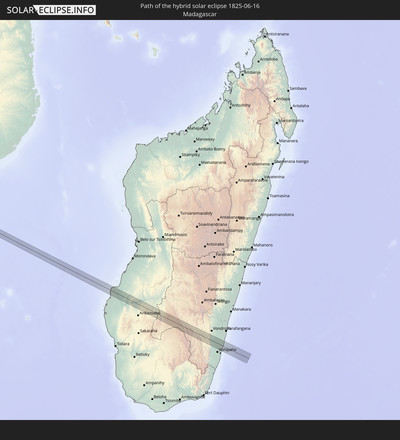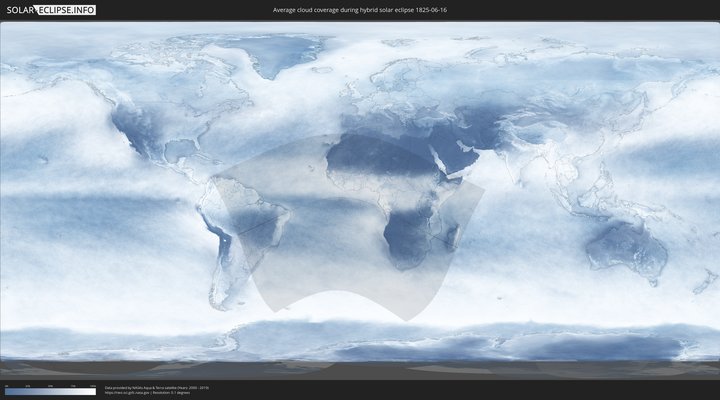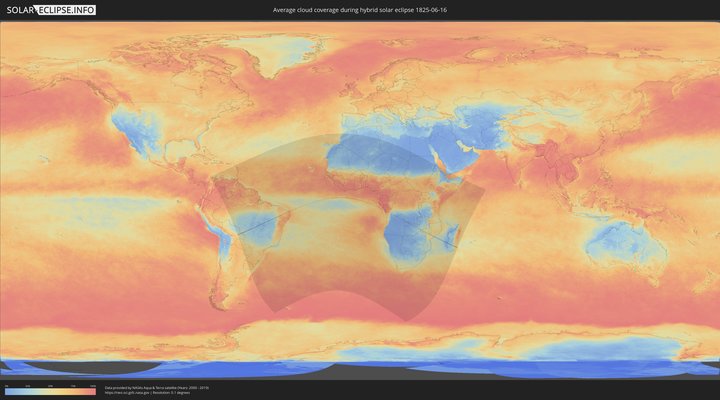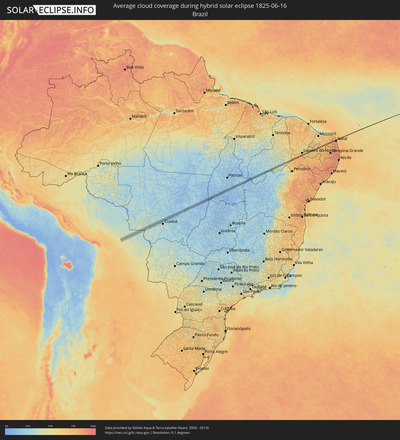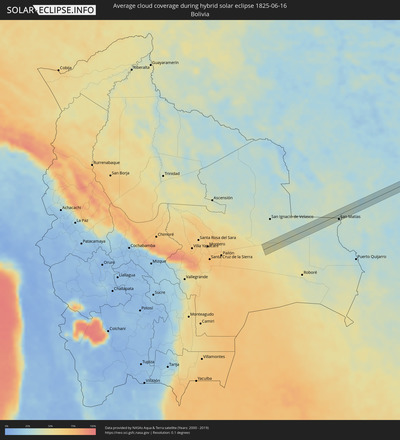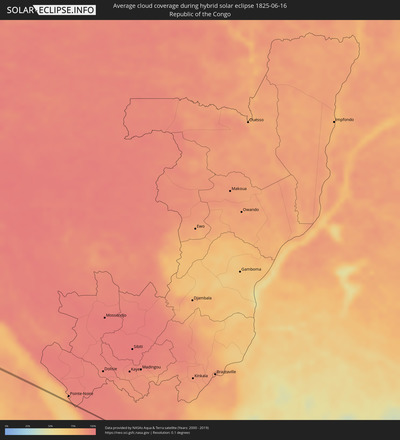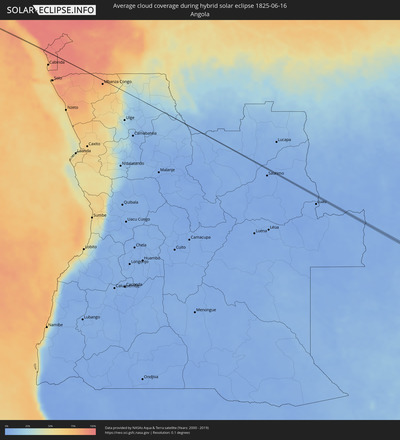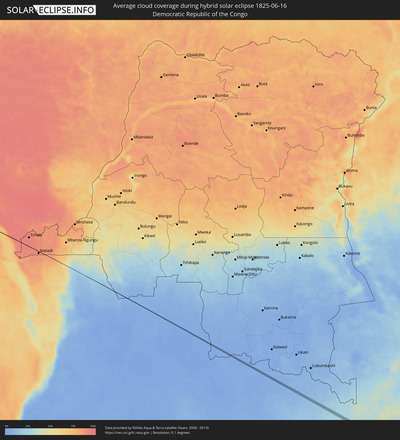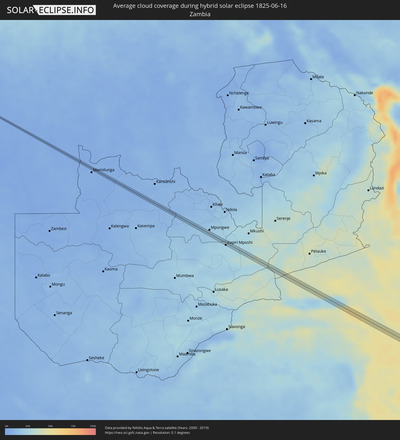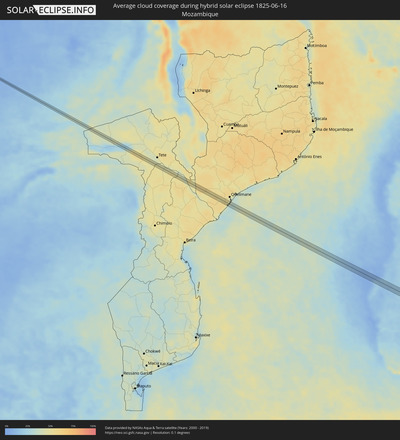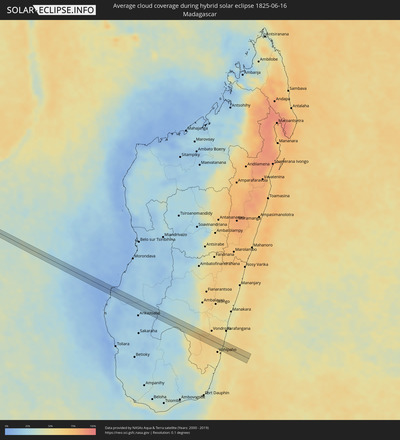Hybrid solar eclipse of 06/16/1825
| Day of week: | Thursday |
| Maximum duration of eclipse: | 00m25s |
| Maximum width of eclipse path: | 13 km |
| Saros cycle: | 134 |
| Coverage: | 100% |
| Magnitude: | 1.0036 |
| Gamma: | -0.3812 |
Wo kann man die Sonnenfinsternis vom 06/16/1825 sehen?
Die Sonnenfinsternis am 06/16/1825 kann man in 81 Ländern als partielle Sonnenfinsternis beobachten.
Der Finsternispfad verläuft durch 8 Länder. Nur in diesen Ländern ist sie als hybrid Sonnenfinsternis zu sehen.
In den folgenden Ländern ist die Sonnenfinsternis hybrid zu sehen
In den folgenden Ländern ist die Sonnenfinsternis partiell zu sehen
 Colombia
Colombia
 Brazil
Brazil
 Argentina
Argentina
 Venezuela
Venezuela
 Aruba
Aruba
 Bolivia
Bolivia
 Saint Kitts and Nevis
Saint Kitts and Nevis
 Paraguay
Paraguay
 Antigua and Barbuda
Antigua and Barbuda
 Montserrat
Montserrat
 Trinidad and Tobago
Trinidad and Tobago
 Guadeloupe
Guadeloupe
 Grenada
Grenada
 Dominica
Dominica
 Saint Vincent and the Grenadines
Saint Vincent and the Grenadines
 Guyana
Guyana
 Martinique
Martinique
 Saint Lucia
Saint Lucia
 Barbados
Barbados
 Uruguay
Uruguay
 Suriname
Suriname
 French Guiana
French Guiana
 South Georgia and the South Sandwich Islands
South Georgia and the South Sandwich Islands
 Portugal
Portugal
 Cabo Verde
Cabo Verde
 Spain
Spain
 Senegal
Senegal
 Mauritania
Mauritania
 The Gambia
The Gambia
 Guinea-Bissau
Guinea-Bissau
 Guinea
Guinea
 Saint Helena, Ascension and Tristan da Cunha
Saint Helena, Ascension and Tristan da Cunha
 Sierra Leone
Sierra Leone
 Morocco
Morocco
 Mali
Mali
 Liberia
Liberia
 Algeria
Algeria
 Ivory Coast
Ivory Coast
 Burkina Faso
Burkina Faso
 Ghana
Ghana
 Togo
Togo
 Niger
Niger
 Benin
Benin
 Nigeria
Nigeria
 Equatorial Guinea
Equatorial Guinea
 São Tomé and Príncipe
São Tomé and Príncipe
 Tunisia
Tunisia
 Cameroon
Cameroon
 Gabon
Gabon
 Libya
Libya
 Republic of the Congo
Republic of the Congo
 Angola
Angola
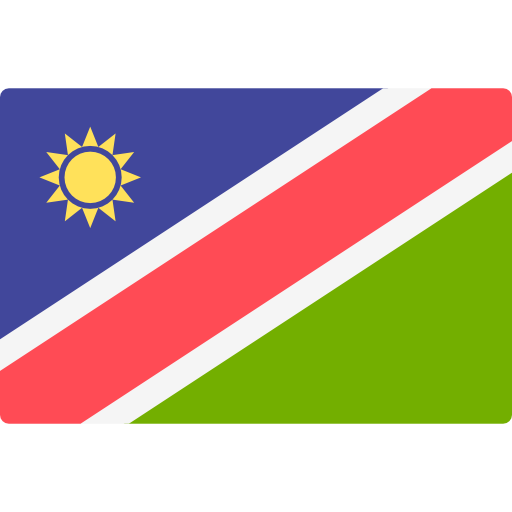 Namibia
Namibia
 Democratic Republic of the Congo
Democratic Republic of the Congo
 Chad
Chad
 Central African Republic
Central African Republic
 South Africa
South Africa
 Botswana
Botswana
 Sudan
Sudan
 Zambia
Zambia
 Egypt
Egypt
 Zimbabwe
Zimbabwe
 Lesotho
Lesotho
 Rwanda
Rwanda
 Burundi
Burundi
 Tanzania
Tanzania
 Uganda
Uganda
 Mozambique
Mozambique
 Swaziland
Swaziland
 Malawi
Malawi
 Ethiopia
Ethiopia
 Kenya
Kenya
 Eritrea
Eritrea
 French Southern and Antarctic Lands
French Southern and Antarctic Lands
 Somalia
Somalia
 Djibouti
Djibouti
 Yemen
Yemen
 Madagascar
Madagascar
 Comoros
Comoros
 Mayotte
Mayotte
 Seychelles
Seychelles
How will be the weather during the hybrid solar eclipse on 06/16/1825?
Where is the best place to see the hybrid solar eclipse of 06/16/1825?
The following maps show the average cloud coverage for the day of the hybrid solar eclipse.
With the help of these maps, it is possible to find the place along the eclipse path, which has the best
chance of a cloudless sky.
Nevertheless, you should consider local circumstances and inform about the weather of your chosen
observation site.
The data is provided by NASAs satellites
AQUA and TERRA.
The cloud maps are averaged over a period of 19 years (2000 - 2019).
Detailed country maps
Cities inside the path of the eclipse
The following table shows all locations with a population of more than 5,000 inside the eclipse path. Cities which have more than 100,000 inhabitants are marked bold. A click at the locations opens a detailed map.
| City | Type | Eclipse duration | Local time of max. eclipse | Distance to central line | Ø Cloud coverage |
 San Matías, Santa Cruz
San Matías, Santa Cruz
|
annular | - | 06:03:49 UTC-04:32 | 16 km | 33% |
 São Raimundo Nonato, Piauí
São Raimundo Nonato, Piauí
|
annular | - | 08:10:46 UTC-02:34 | 0 km | 36% |
 Ouricuri, Pernambuco
Ouricuri, Pernambuco
|
annular | - | 08:28:06 UTC-02:19 | 7 km | 78% |
 Milagres, Ceará
Milagres, Ceará
|
annular | - | 08:15:09 UTC-02:34 | 1 km | 65% |
 São José de Piranhas, Paraíba
São José de Piranhas, Paraíba
|
annular | - | 08:15:44 UTC-02:34 | 2 km | 59% |
 Pombal, Paraíba
Pombal, Paraíba
|
annular | - | 08:16:42 UTC-02:34 | 2 km | 66% |
 Caicó, Rio Grande do Norte
Caicó, Rio Grande do Norte
|
annular | - | 08:17:43 UTC-02:34 | 2 km | 70% |
 Currais Novos, Rio Grande do Norte
Currais Novos, Rio Grande do Norte
|
annular | - | 08:18:34 UTC-02:34 | 5 km | 70% |
 São Tomé, Rio Grande do Norte
São Tomé, Rio Grande do Norte
|
annular | - | 08:19:15 UTC-02:34 | 5 km | 76% |
 São Paulo do Potengi, Rio Grande do Norte
São Paulo do Potengi, Rio Grande do Norte
|
annular | - | 08:19:44 UTC-02:34 | 1 km | 80% |
 Extremoz, Rio Grande do Norte
Extremoz, Rio Grande do Norte
|
annular | - | 08:20:28 UTC-02:34 | 2 km | 81% |
 Kapiri Mposhi, Central
Kapiri Mposhi, Central
|
annular | - | 16:01:58 UTC+02:10 | 7 km | 24% |
 Vangaindrano, Atsimo-Atsinanana
Vangaindrano, Atsimo-Atsinanana
|
annular | - | 16:28:45 UTC+02:27 | 6 km | 53% |
